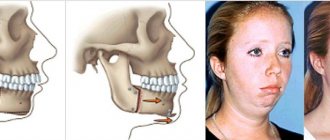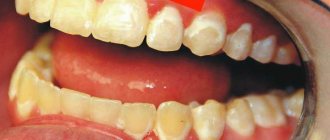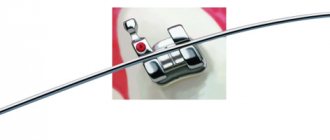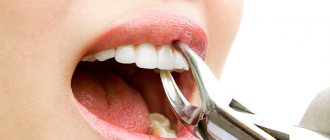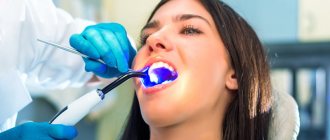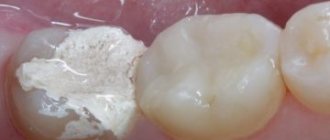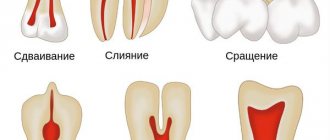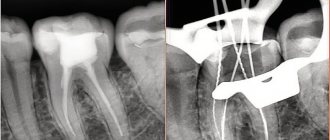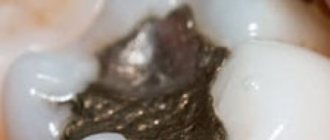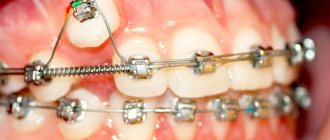3618
The Russian health insurance program does not include a clause on orthodontic treatment. For this reason, patients pay for dental services related to bite correction from their own funds.
Moreover, the purchase of corrective devices is also carried out at your own expense. Such costs significantly hit your pocket.
However, if you understand the current legislation, you can return part of the costs for correction with braces as part of social tax discounts.
Let's consider the algorithm of actions in detail.
Reasons
A tax deduction is the return of a certain percentage of the total amount of material resources spent.
Bite correction with braces falls into the category of social deductions for paid general medical services provided.
Such compensation is provided in accordance with the following legal documentation:
- Article No. 219 of the Tax Code of Russia , which enshrines the right of all officially working citizens to receive compensation for treatment and the purchase of medications needed for this. The size of returns is also indicated with the definition of the maximum allowable amount.
- Government Resolution No. 201 . It contains a list of general medical services, medications and types of therapy, part of the cost of which can be refunded, as well as a list of papers required to receive compensation.
- Article No. 210, clause 3 of the Tax Code of the Russian Federation , which defines the deadlines for submitting the necessary documentation to the tax service and the deadlines for receiving a refund.
- Letters from the Ministry of Finance of Russia No. 03-04-05/7-146 , signed on January 27, 2013. It stipulates the conditions under which orthodontic correction is considered a reimbursable service.
- Letters from the Federal Tax Service of the Russian Federation dated December 20, 2012 under No. ED-3-3/4646 , which defines the reasons for refusal to receive a refund.
Is installing braces considered an expensive treatment?
This dental procedure does not fall into the category of expensive treatment. In a letter from the Federal Tax Service of Moscow dated August 19, 2010 No. 20-14/4/ [email protected] this issue was raised. The letter states that a refund for orthodontic treatment, including the use of braces, can be claimed taking into account a number of restrictions set out in the Tax Code of the Russian Federation (Article 219, paragraph 2).
The state will reimburse the taxpayer for the following expenses for medical services:
- Manufacturing and installation, removal of braces.
- Visiting the dentist.
- Cleaning the mouth, etc.
Saving percentage
According to all the documents listed above, after orthodontic treatment, the taxpayer, subject to regular tax deductions, may be provided with a payment - this is 13% of the total cost of the service. Moreover, it is stipulated that only an amount not exceeding 120 thousand rubles will be reimbursed.
Important! The amount of compensation cannot be higher than the total amount of taxes paid by the person for the year.
This means that the amount of the refund is entirely determined by the amount of income taxes paid by the individual for the calendar year.
Since personal income tax is equal to 13% of actual wages, it is precisely this that the state can compensate for. In other words, an amount greater than that which was deducted as tax for the reporting year will not be returned.
To determine the amount of payment, the formula is used:
NV = OS × 13%, in which NV is the abbreviation of tax deduction, OS is the amount of the total costs of treating the taxpayer.
The main advantages of Radiance sapphire braces and the duration of treatment with this system. Come here to learn more about the purpose of rubber bands for braces.
At this address https://dr-zubov.ru/ortodontiya/apparaty/brekety/vestibulyarnye/smart-clip-nadezhnoe-ustrojstvo.html you will find a detailed description of Smart Clip braces.
What is the deadline for submitting documents?
No later than three years from the date of provision of the service. After the beginning of the new year following the reporting year. For example, it will be possible to return part of the money for braces installed in 2021 from January 2020.
What's the result?
You can return the tax deduction for braces from an amount of no more than 120,000 rubles in one year. 13% of the cost of materials will not be refunded; only medical services will be counted. Deductions can be issued for the treatment of spouses, children and parents. Documents must be submitted no later than three years from the date of service provision.
The iOrtho clinic network provides high-quality services for correcting malocclusion with Invisalign aligners, sign up for a consultation now!
Who is eligible
Only those citizens who regularly made contributions, in an amount determined by the state, throughout the entire calendar year can apply for compensation. The condition that these payments must be made every month is not considered mandatory.
Those citizens who:
- had income and paid 13% tax on it;
- paid for the treatment of a husband (wife), their parents or a child under 18 years of age, with the proviso that no more than 3 years have passed since the time of treatment.
Important: the refund will be made only when the citizen has all the documents confirming full payment.
Categories of citizens who cannot count on such payment have been identified:
- working citizens, but not officially employed;
- pensioners, if they have had no income during the previous 3 years of treatment;
- taxpayers paying tax using UTII or a simplified system.
Deduction for unemployed citizens
The most important condition for the implementation of the deduction is the payment of income tax. It is levied not only on wages, but also on other sources of income. These are:
- Funds from the rental of real estate.
- Income from the sale of movable or immovable property.
- Provision of civil law services.
If a non-working parent who has paid the 13% personal income tax required by law applies for reimbursement for a child’s braces, he can submit an application for a refund to the Federal Tax Service.
Registration procedure
Based on Article No. 219 of the Tax Code of the Russian Federation (clause 2, paragraphs 1 and 2), you need to apply for a deduction to the tax service at your place of residence, or to your employer.
The first option is considered preferable, since to return the tax at work you will still need to go to the relevant authority to receive a notification. In addition, with a long period of treatment, it is easier to prepare documents for delivery and report for everything at once.
List of documents
To compensate for the cost of treatment with braces, you must provide the following list of documents:
- An application from a taxpayer to provide him with a tax deduction (written in any form, since there is no single approved sample).
- Declaration 3-NDFL , filled out in your own hand.
- An extract from the accounting department , issued under 2-NDFL, which indicates the total amount of deductions in the form of tax for the reporting period. If the applicant simultaneously works in several places, such a certificate is required from each of them.
- Documents proving relationship , for example, a marriage certificate or a copy of the parent’s passport (required when a deduction is issued for the treatment of close relatives).
- A certificate confirming payment for medical services (only in the original!). The form was approved on July 25, 2001 by Order of the Ministry of Health of the Russian Federation No. 289, National Assembly of the Russian Federation No. BG-3-04/256.
- An agreement or a certified copy with a medical institution for the provision of orthodontic treatment.
- License of a medical institution allowing to carry out medical activities (a certified copy can be submitted).
- Compulsory medical insurance policy.
- Payment documents : all kinds of checks, receipts, orders (not required by law, but in practice they may be requested).
Important! The medical institution issues a document confirming payment only after full payment for treatment. Usually, to receive it, the accounting department asks to present all payment documents. If any part of them is lost, the accounting department will not include the price indicated in them in the total cost of treatment.
Institutions
The Federal Tax Service Inspectorate (otherwise known as the Inspectorate of the Federal Tax Service) is the main authority where a taxpayer must apply to receive compensation for orthodontic treatment.
Citizens must bring the entire package of documents specified above only to the inspectorate at their place of residence.
To submit documents, it is not necessary to visit the Federal Tax Service in person. You can send documents by mail, making sure to include a complete description of them in the package.
The first option is considered more acceptable , since any, even a small error or inaccuracy in the preparation of documentation will lead to refusal and return. A person learns about the invalidity of the papers only after some time, when the package with the refusal is returned to him.
At a personal meeting, the inspector will immediately point out an error, which can be corrected much faster.
Important! As an alternative, you can submit documents through a proxy. With this option, he must have a power of attorney of the established form with a mandatory notary mark.
Registration procedure
The entire procedure for processing a deduction refund consists of 4 stages:
- Preparation of documentation. You need to collect all documents in accordance with the list above.
- Submitting them to the Federal Tax Service at the place of permanent residence.
- Checking and reviewing the provided package . For this inspection, a certain period is allotted - no more than 3 months from the date of submission of the application. If the inspector identifies errors, inconsistencies or shortcomings, he immediately notifies the applicant about this. A period of no more than 5 working days is provided for correcting errors.
- Transfer of deductions . Upon completion of the audit, the taxpayer is sent a notification with the result: refusal or approval of the application. In the second option, funds are credited to the applicant’s account within 30 days.
According to the law, deductions are allowed from the year following the period in which payment was made for the service of correcting defects of the dentofacial apparatus with braces.
Important! Only one deduction is allowed per year. Another important condition, without which you cannot expect compensation, is that the medical institution has a state license to carry out such activities.
Documents for obtaining a tax deduction for braces in 2018
To receive a tax refund for braces, the following package of documents must be submitted to the Federal Tax Service:
- Actually the declaration 3-NDFL.
- Help 2-NDFL. It is used to check how much tax was transferred in the reporting year.
- Marriage or birth certificate, if braces were paid for for a relative.
- Documents from the hospital:
- an agreement with license details (if they are not available, a copy of the license itself is provided);
- certificate for the tax authorities regarding payment (issued in a special form, approved by order of the Ministry of Health and the Ministry of Taxes dated July 25, 2001 No. 289/BG-3-04/256);
- checks and other payment documents.
Compensation for children
According to Article 219 of the Tax Code of the Russian Federation, clause 3, clause 1, you can receive a refund from the Federal Tax Service for treating a child with braces if he is under 18 years old. This is once again stated in the letter from the Ministry of Finance of the Russian Federation numbered 03-04-09/4204 dated January 26, 2018.
You can apply for a deduction for both a native child and an adopted or cared for child.
This means that the main condition that limits the provision of a deduction for treating a child with braces is age. Factors such as his state of health, place of study, etc. have no significance.
When drawing up an agreement with the clinic and receiving all payment documents , it is important to ensure that the papers are drawn up in the name of the parent who will claim compensation.
To the specified list of documents you will need to add a copy of the birth certificate certified by a notary (the original must be brought with you).
Specifics of correcting bite defects with Empower non-ligature braces and rules for caring for the system. In this publication we will look at the design of the Damon Clear braces system.
Here https://dr-zubov.ru/ortodontiya/apparaty/brekety/rekomendacii-po-uxodu-posle-ustanovki-i-vidy-prisposoblenij.html watch a video about proper care of braces.
When is it possible to get a refund?
A deduction is a reduction in taxable income for medical expenses. It is preferable to return the income tax in connection with the use of braces to the tax service. You can also apply for a refund to your employer, but he will transfer the tax paid only for one period. And treatment associated with the installation of systems for straightening teeth and correcting bites takes a lot of time. It is more profitable to collect all the papers, transfer them to the Federal Tax Service and receive compensation in a lump sum.
The statute of limitations for this type of deduction is 3 years. Any citizen of the Russian Federation who has an official job and pays 13% personal income tax has the right to return part of the funds spent on orthodontic treatment.
Social tax deduction for braces is provided subject to the following conditions:
- Carrying out procedures in a licensed dental clinic.
- Payment for services from personal funds.
The procedure for implementing tax benefits is set out in Article 219 of the Tax Code of the Russian Federation. If the deduction is issued for a minor, one of the parents (adoptive parents, guardians) has the right to apply for it. The tax service will refuse a personal income tax refund if the bracket system was paid for by the employer or a third party.
How much can you expect?
Installing braces is not an expensive medical service. This means that compensation for it is calculated in accordance with Article No. 219 of the Tax Code, paragraph 2.
In practice this means that:
- Expenses for orthodontic correction are reimbursed only up to 120 thousand rubles. This means getting more than 15,600 rubles. will not succeed (this is 13%). If a smaller amount was spent on correcting the defect, then the tax deduction is correspondingly reduced.
- Since treatment with braces is not classified as an expensive service, payments for consumables used are not included in the compensation. This means that 13% of the costs for elastic bands, arches, springs, etc. will not be returned.
Important! Based on the Tax Code of the Russian Federation, only expenses for the following medical services will be reimbursed: manufacturing, installation and subsequent removal of corrective structures, orthodontic appointments, radiography of the jaws, making impressions, professional cleaning of the mouth, filling and extraction of teeth.
The refund amount is small. In order to somehow reduce the cost of orthodontic treatment, you need to use an integrated approach, i.e. choose the best priced model of braces and install it during the clinic’s various discounts and promotions.
The video provides additional information on the topic of the article.
Is it possible to obtain a deduction for the installation of braces for the taxpayer himself?
The Tax Code does not prohibit the return of part of the funds paid for the installation of braces to the taxpayer, and not to his child. By themselves, braces and their maintenance are an expensive procedure, so when an adult goes to work, he may well take advantage of the right to benefits and ease his financial situation. Registration of a deduction for braces for an adult is no different from its registration for children. A citizen must write an application, provide personal documents, a declaration, a certificate of income, receipts and certificates from a dental clinic. The actual receipt of funds in the taxpayer's bank account will take place approximately a month after the documents are submitted.
Last update 2018-06-28 at 11:17
Installing braces is a costly and slow procedure. The entire process of correcting the bite with monthly visits to the doctor takes more than a year. In the material we will give examples of tax deductions for braces, and tell you what expenses will be refunded 13%.
Reviews
Few people like all the paperwork associated with collecting papers. But in a situation involving the installation of braces, it is worth it.
It is quite possible to return part of the funds spent on treatment and spend it on something else. After all, today, correcting bite defects is a big expense.
You can talk about your experience of receiving compensation and express your opinion regarding the difficulty of going through this process by leaving a comment on this article.
If you find an error, please select a piece of text and press Ctrl+Enter.
Amount of social deduction
A conscientious tax payer will be able to return 13 percent for the use of braces from the amount of 120,000 rubles. This is the maximum threshold.
This amount may include expenses:
- For the purchase of related medications prescribed by the dentist.
- Related to payment for medical institution services.
The amount of the refund depends on the annual amount of personal income tax. The state returns 13% of personal income tax. You cannot receive a refund that exceeds the amount of tax paid during the year.
Important nuances of implementing deductions
To save time and effort on the annual collection of documents, it is better to submit all the papers at once for each year in which dental procedures were completed.
If the patient completes treatment and prepares the necessary documentation within the period of 3 years allotted by law, he will receive compensation. If braces were installed in 2021, you have time until 2021.
If you undergo procedures at a clinic where the costs for braces components are paid separately, you will not be able to receive reimbursement for these costs. They will be deducted from the total amount of compensation.
